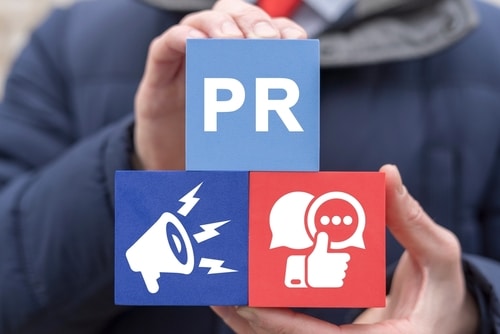6 Top Tips to Boost your Local SEO
If your website is not optimised for local searches, you could potentially miss out on customers who are right on your doorstep. Local SEO should not be overlooked, especially for businesses that offer their products/services within a certain area. Below are a few tips to help improve your local SEO.
What is local SEO?
Local SEO is a strategy to help businesses improve their visibility within a ‘local’ area. If a user searches for anything that is related to your business, a map with 3 listings will appear within the search results.
Local SEO works 2 fold within search results, first is the map that displays the top local listings within an area. This generally appears at the top of search results.
The second part is the regular organic listings, a standard part of any search result, generally appearing underneath the map listings.
Local SEO Tips for your business
1. Find keywords related to your business
Finding the right keywords to target for your business is the crucial first step in the process. Once you have the right base or seed keywords, you can explore closely related keywords and adjust or write your content accordingly. There are various tools available online to help you search for related keywords such as:
- https://ahrefs.com/keywords-explorer
- https://www.semrush.com/analytics/keywordoverview
- https://moz.com/explorer
Tools such as Google Keyword Planner will provide information that is relevant to your area and includes the average monthly searches, as well as how competitive they are when used for Google Ads.
When researching keywords, make sure there is interest locally, you can do this by searching the keyword in Google and seeing if a map is displayed in the results.
2. Create and optimise a Google My Business profile
You will not appear in the map on search results without a Google My Business profile. You can create a profile for free within a few minutes, but depending on how you verify your account, it might take a few days before it is active. Elements you should list on your profile include:
- Detailed description of your business and what you offer
- Specific business category
- Business hours, especially holidays
- Your address
- Products and/or services
- Photos
- ReviewsI have found that listings without a review are often not displayed, so try to get your first review as quickly as possible.
You can view the guidelines on creating a Google my businessMy Business profile here: https://support.google.com/business/answer/10515606?hl=en#zippy=%2Cadd-services-offered%2Cadd-in-store-products%2Cupload-photos-videos-regularly%2Cselect-attributes-to-describe-your-business
3. Don’t forget your social media accounts
Treat your social media pages as you would your Google My Business profiles;, include your address, contact details, and more, where possible. Ask for reviews from your customers, and share content from your website, such as news or any offers you have.
Where possible, try to include a call to action button on your posts, such as a link to an appointment booking page on your website or messenger/WhatsApp, this will help you to easily connect quickly with potential leads.
4. Submit your business to local directories
Try to submit your business to as many local directories as possible, but when you do make sure that your contact information is consistent, use the same name, address and phone number (NAP) on every website (even your own).
What is NAP?
NAP is an acronym for name, address and phone number and is an important piece of information that Google takes into consideration when displaying your website in local search results. By having consistent NAP information across various websites, Google will be more confident that the information displayed in search results is accurate, and you will appear higher up in search results.
Moz has a free local listing tool so you can identify any listings you currently have and if the information is consistent: https://moz.com/products/local/check-listing
You can include your NAP information on your website for Google to find in the form of Schema (https://schema.org/), this allows you to add a large range of information, such as:
- Name
- Address
- Phone number
- Email Address
- Reviews and score average
- Links to social media
5. Optimise your website for local SEO
If you have more than one physical location for your business, then creating a page for each location is a great way to boost your local SEO. You can include your NAP information on each page and an embedded Google map for that location, this will help to improve your position within search results. When creating multiple pages for each location, try to make the content as unique as possible rather than cloning a page and just changing the location name.
6. Competitor backlink analysis
If you are being outranked by your competitors there could be several reasons, the first place to look will be their backlinks. You can see exactly where their site is listed, and the types of links they have pointing to their website. You can then start listing your website onto the same websites to potentially improve your position in search results.
A free tool from Ahrefs is available to partially check the backlinks of your competitors: https://ahrefs.com/backlink-checker
Below are a few free tools that can help you to gather information on how your business is performing and allow you to implement positive changes to your website:
- Google Search Console – https://search.google.com/search-console
- Google Analytics – https://analytics.google.com/analytics/web/
Read all about it...
LATEST NEWS

How Startups Can Earn Big Media Coverage with Small Budgets

The Role of PR in the Health Tech RevolutionTransform Your Press Release


